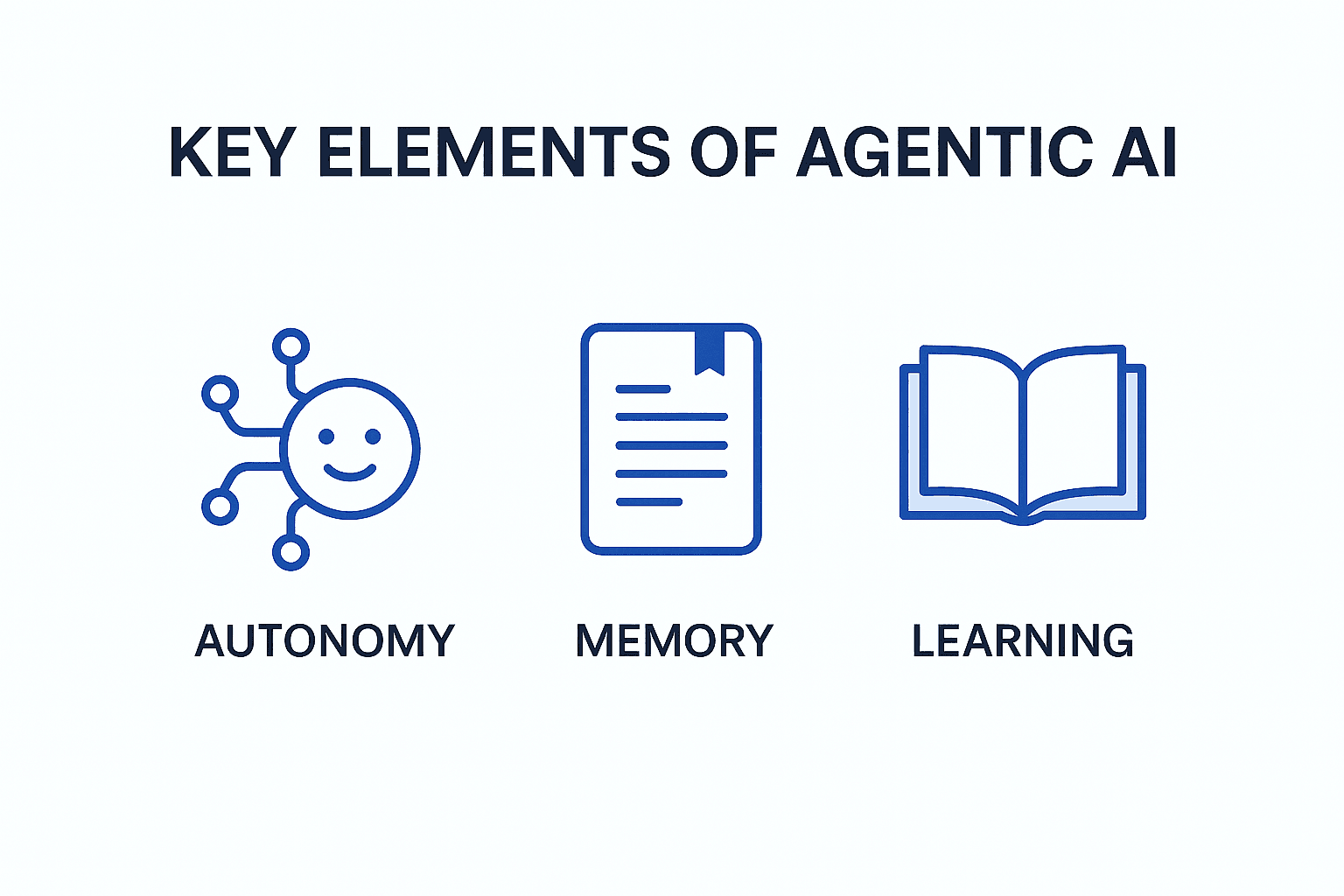Why Agentic AI Is Different
Most of what we’ve seen in enterprise AI so far has been “assistive.” A chatbot that answers FAQs. A recommendation engine that suggests the next product. Even copilots in CRM or ERP mostly surface insights – you still decide what to do next.
Agentic AI flips that. Here, the system isn’t waiting for your input. It sets goals, takes action, and loops back with results. Think of it as the difference between a GPS showing you routes vs. a self-driving car that chooses and drives the route.
What Agentforce Brings to the Table
Salesforce’s Agentforce is one of the first attempts to embed this autonomy into business workflows at scale. From what’s publicly shared, the platform can handle:
Task orchestration: updating records, escalating approvals, assigning work
Context carry-over: remembering prior interactions across Slack, CRM, and case systems
Vertical flavoring: pre-tuned patterns for industries like manufacturing and the public sector
This isn’t about replacing sales reps or service agents overnight. It’s about cutting the “friction tax” in everyday digital work.

Architectural Implications
Where CIOs should pay attention is less the marketing story and more the architecture:
Data gravity: Agents are only as good as the data they sit on. If your Salesforce instance has poor hygiene, Agentforce will amplify that mess.
Process drift: When AI agents take actions, they introduce a new kind of “shadow IT”- not rogue spreadsheets this time, but autonomous workflows you didn’t explicitly code. Governance and observability become non-negotiable.
Integration edge: Slack as the execution layer is clever. It turns conversations into the “command line” of enterprise work. But it also means your enterprise integration strategy must extend into collaboration tools.
The Bigger Picture
What excites me isn’t just Salesforce’s play. Agentforce is an early sign that enterprise software is moving from systems of record – systems of intelligence – systems of action.
Systems of record (ERP/CRM) captured what happened.
Systems of intelligence (analytics, copilots) explained what it meant.
Systems of action (agentic AI) will increasingly decide and do.
That shift is bigger than any one vendor. Salesforce has planted the flag, but CIOs will need a strategy that spans their entire digital core – CRM, ERP, e-commerce, and custom apps.
At Expericia, we see agentic AI not as a “feature” to switch on, but a design principle. It changes how you architect data flows, how you model trust boundaries, and how you think about the employee experience. Getting this right means turning AI from a shiny add-on into a durable competitive advantage.




